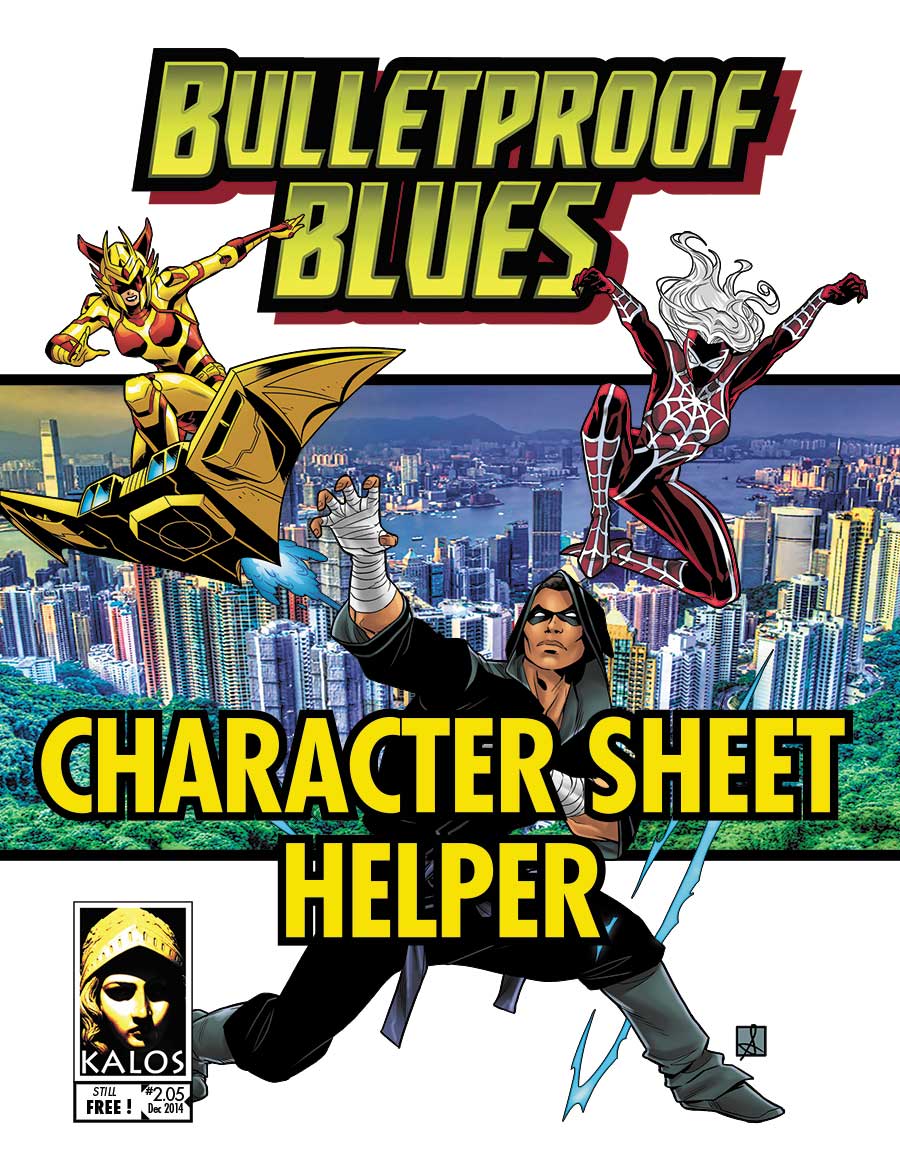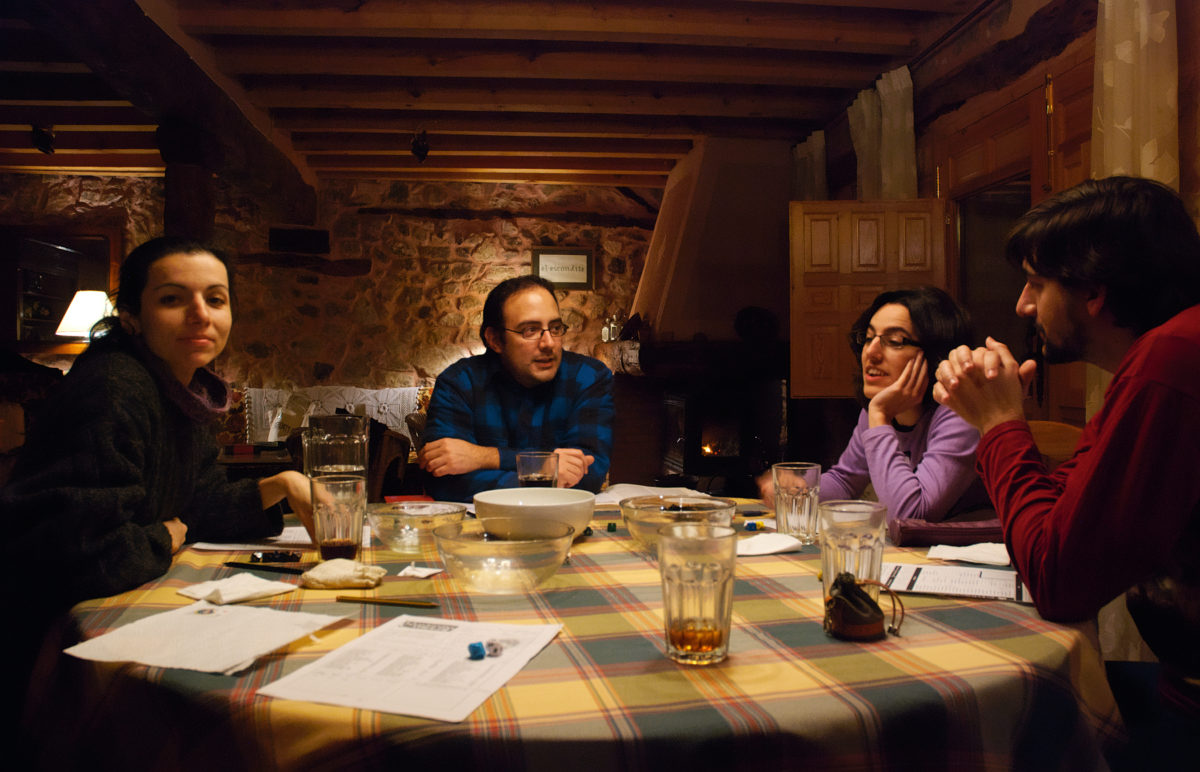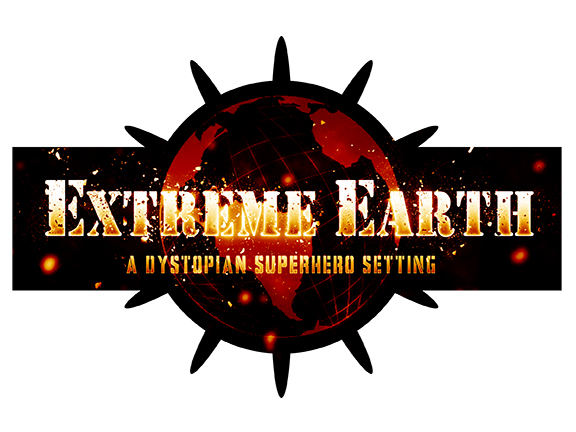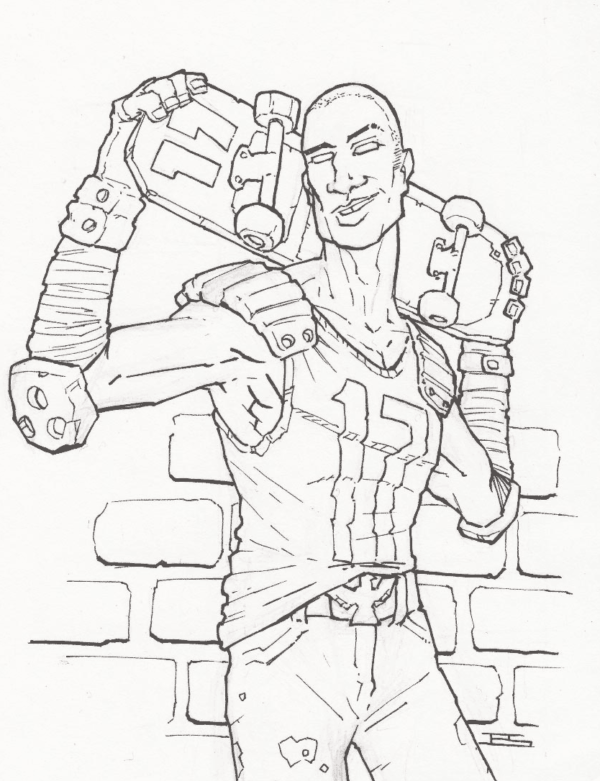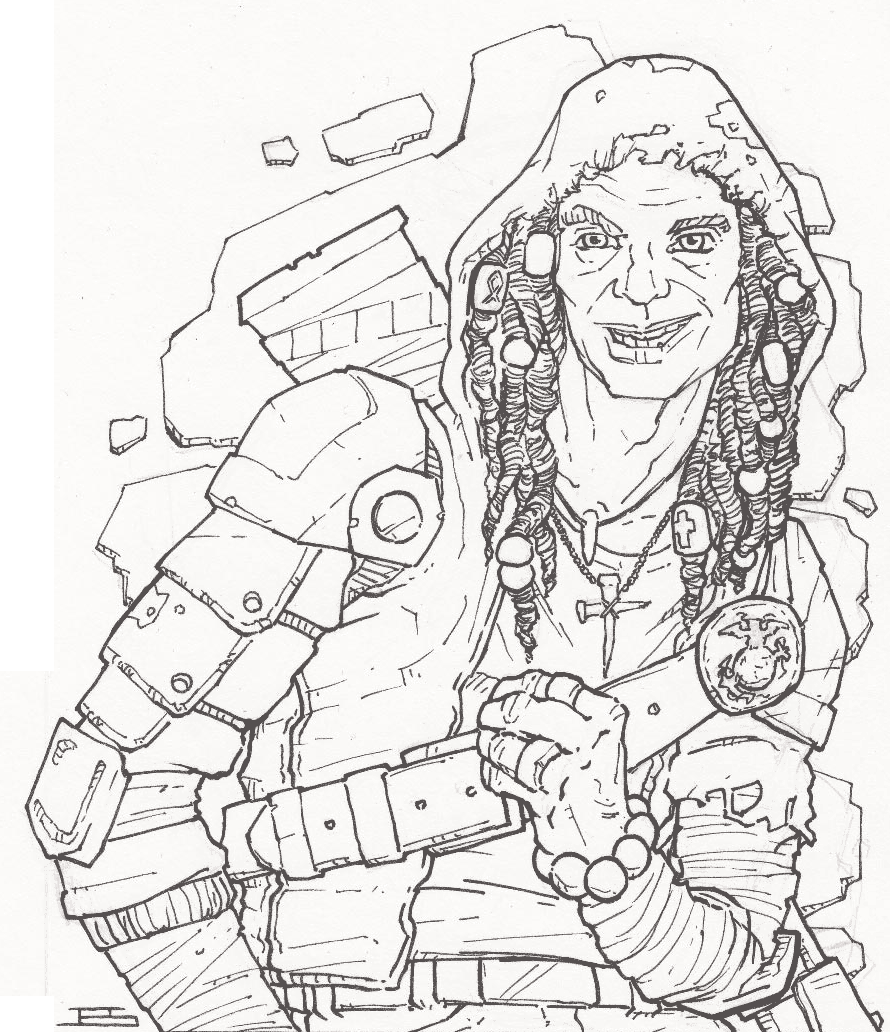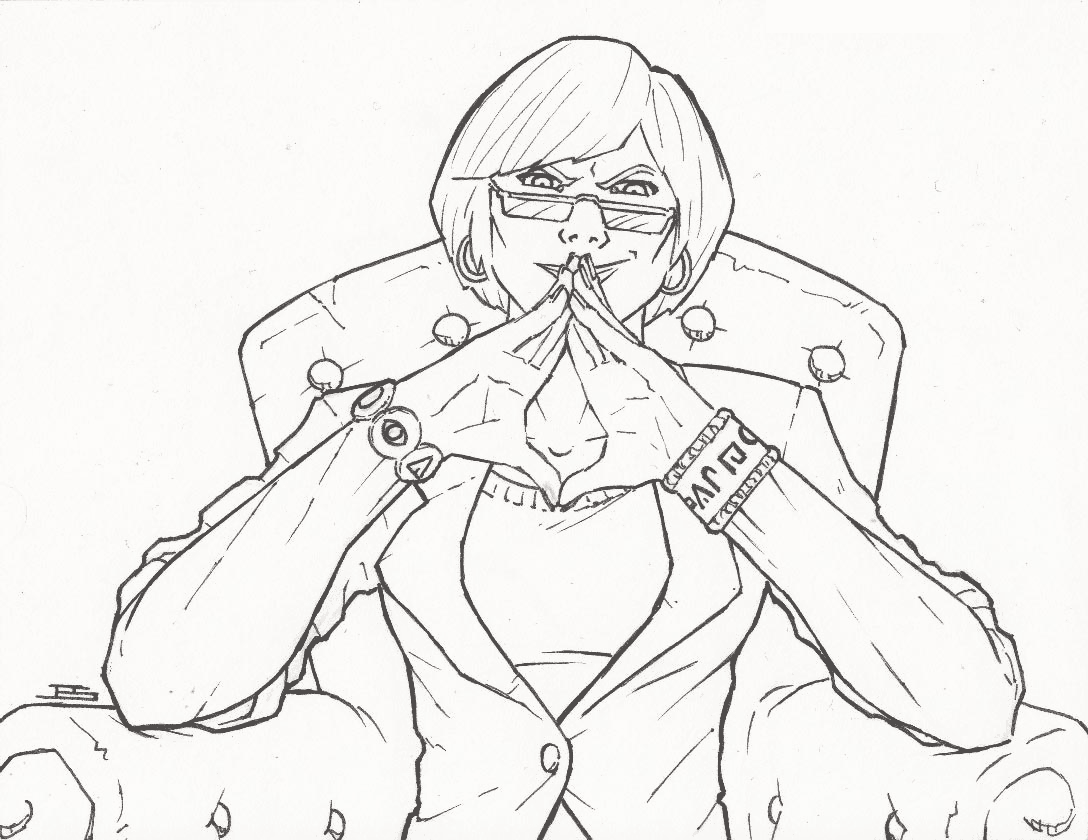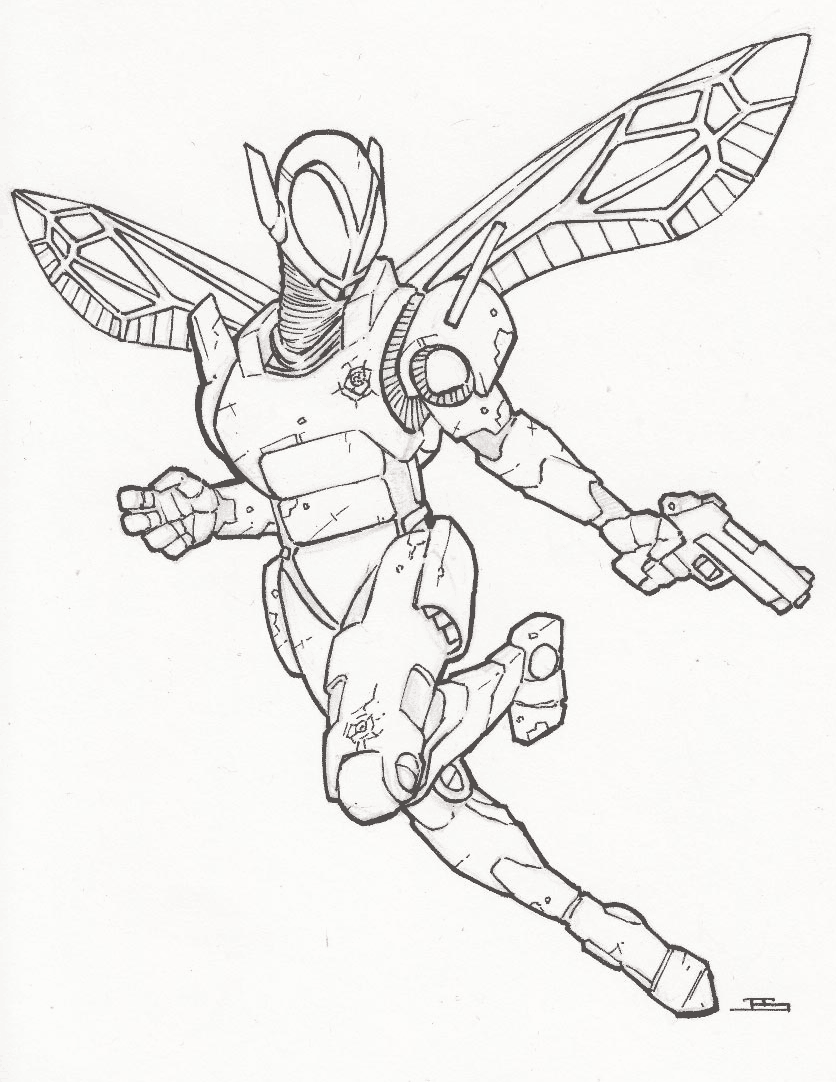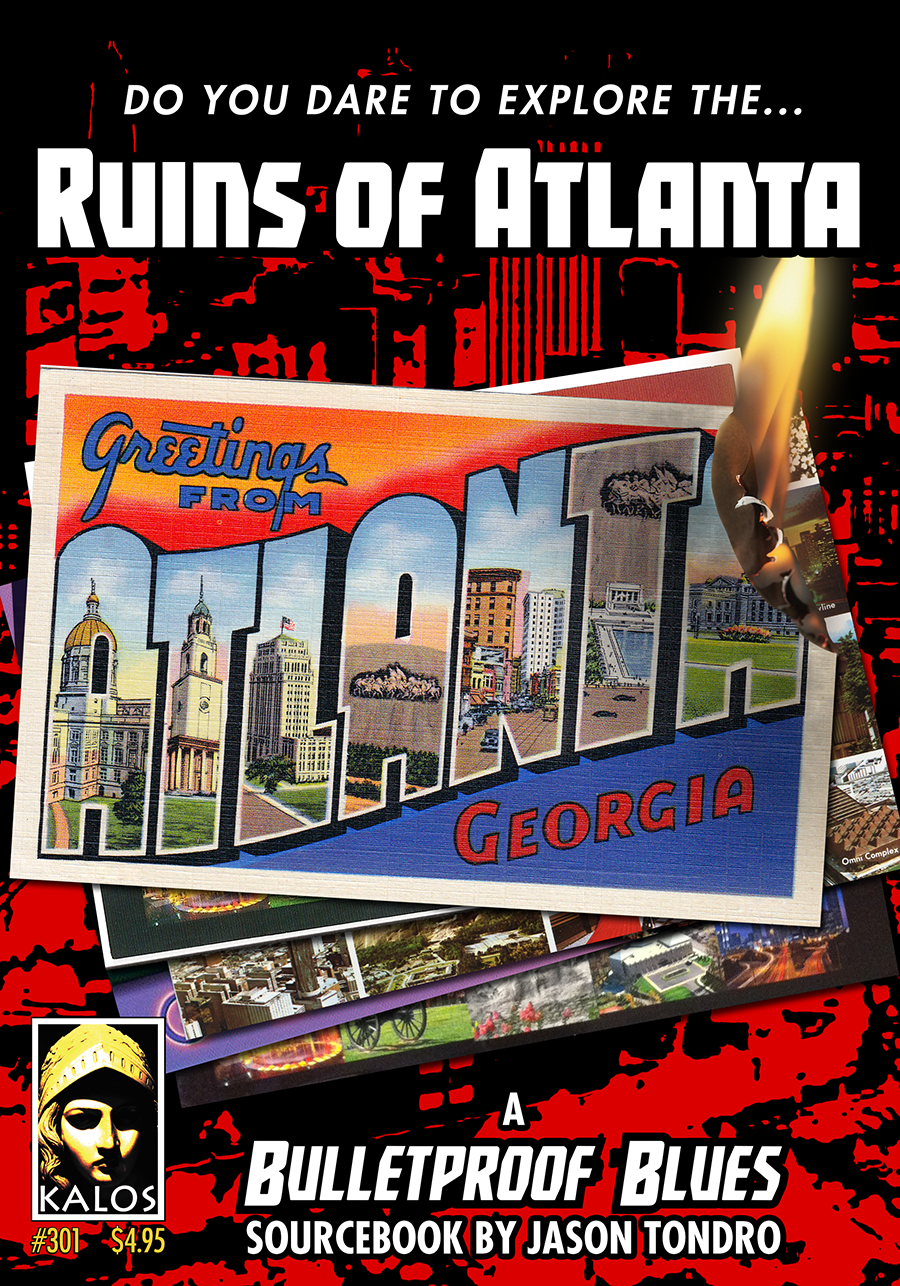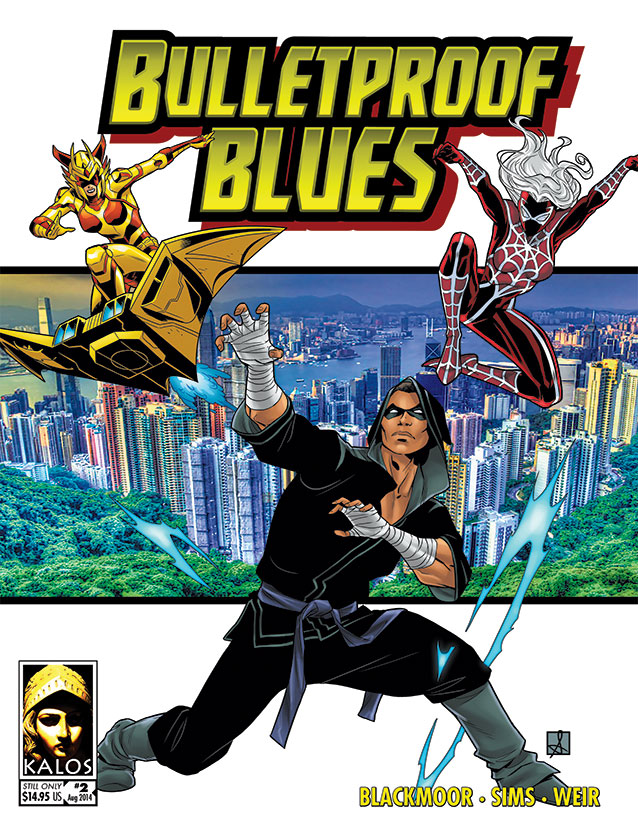I was playing around today with creating custom coffee mugs through Cafe Press. From top to bottom, these are the GORGON, Kalos Comics, and Aegis logos. They’d be expensive, as coffee mugs go — $18 each, plus shipping. Is there any demand for these? I would sell them at my cost.
Open content online, proofs ordered
We have finished formatting all of the open content from Bulletproof Blues Second Edition (i.e., all of the text and artwork). It is online at RPG Library Open Game Content:
https://ogc.rpglibrary.org/index.php?title=Bulletproof_Blues
The print version of the book has cleared premedia at the printer’s, and we have ordered a proof, which should arrive late next week. Knock on wood, the proof will not have any errors and the cover art will line up correctly, and the printed books will start shipping next week.
Character Packs are now online
We have released the new Sean Izaakse character art from Bulletproof Blues Second Edition on DriveThruRPG in two new character packs, and we have updated the original Character Packs featuring art from Dan Houser. Check them out!
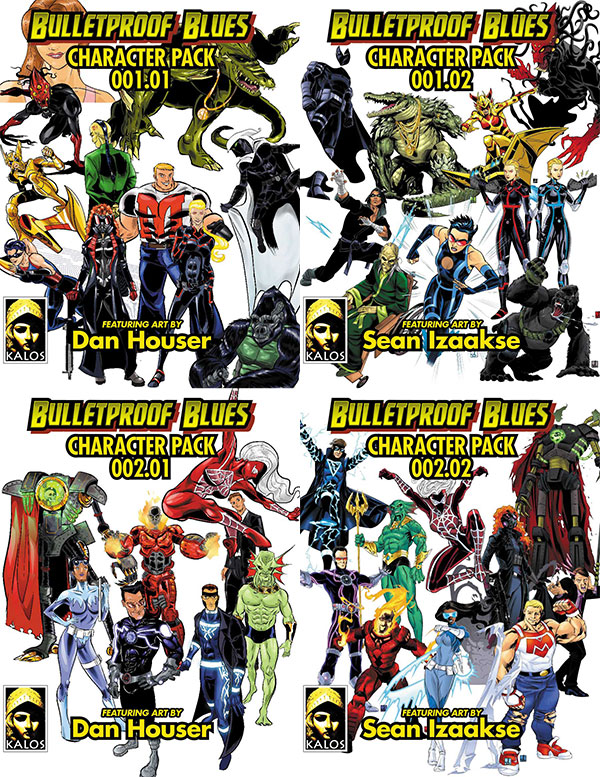
http://rpg.drivethrustuff.com/product/113704/Bulletproof-Blues-Character-Pack-001.01
http://rpg.drivethrustuff.com/product/140915/Bulletproof-Blues-Character-Pack-001.02
http://rpg.drivethrustuff.com/product/123215/Bulletproof-Blues-Character-Pack-002.01
http://rpg.drivethrustuff.com/product/140951/Bulletproof-Blues-Character-Pack-002.02
Kickstarter backers will be sent coupons for these items over the next few days.
All of these are licensed under a Creative Commons Attribution-ShareAlike 4.0 License.
http://creativecommons.org/licenses/by-sa/4.0/
Layout is complete!
We have completed the print and PDF layouts for Bulletproof Second Edition! We will have to wait on the proof for the print version before we can start getting those printed and mailed out to our Kickstarter backers, but we will start sending out the links for the PDF version over the next couple of days. Thanks so much for your patience!
We have already uploaded the revised and expanded Character Sheet Helper, and you can download that right now:
http://rpg.drivethrustuff.com/product/109612/Bulletproof-Blues-Character-Sheet-Helper
What Is A Roleplaying Game?
Every roleplaying game has a section at the beginning that attempts to explain what a roleplaying game is, and Bulletproof Blues is no exception. This is the section that the second edition of Bulletproof Blues (coming soon!) will have in the Introduction chapter, explaining what a roleplaying game is.
As trivial as it sounds, two distinct elements set “roleplaying games” apart from other things which are not roleplaying games: roleplaying and game play.
First, a roleplaying game involves roleplaying. Generally speaking, roleplaying involves taking on a persona or character and making decisions based on what that character would do in a given situation. Does having a character in a game, by itself, make that a roleplaying game? No. The little dog token in a Monopoly game and a Blood Elf in World Of Warcraft are both characters, but Monopoly and World Of Warcraft are not roleplaying games. Can you roleplay as a dog while playing Monopoly? Yes, and you can roleplay as an elf while playing World Of Warcraft. What keeps these from being roleplaying games is that the roleplaying is not part of the game — you can’t get your Monopoly dog out of jail through unscripted conversation with the jailer, nor can you use roleplaying to convince a cultist in World Of Warcraft to let you pass by without a fight. If the rules of the game do not allow for the possibility that a conflict could be resolved through unscripted conversation (however unlikely that might be), then it isn’t a roleplaying game.
Second, a roleplaying game is a game. Roleplaying games are sometimes compared to improvisational theatre, and there are similarities, but improv theatre isn’t a game. How can you tell if something is a game? Games have rules that govern things like conflicts between players and whether something a player attempts is successful. Improv theatre is fun, but there aren’t any rules like this. As Drew Carey described “Whose Line Is It Anyway?”, it’s “the show where everything’s made up and the points don’t matter.” It’s fun, but it’s not a game, and therefore it’s not a roleplaying game.
Bulletproof Blues has more rules than some games, but less than others, and an essential part of conflict resolution involves making decisions that your character would make under the circumstances. Maybe those decisions aren’t the most tactically advantageous, but if they are true to what your character would do, and if you are having fun playing, then you are playing correctly, because that’s what Bulletproof Blues is all about.
If you would like to read more about who plays roleplaying games, and why and where they play them, check out www.theescapist.info.
Extreme Earth is looking good!
Fighting a battle against impossible odds
Don asks, “I have a character with 6 Blast going against A villain of 6 force field. He hits, does not has expertise and so that not in the equation. Once he hits his 6 Blast is absorbed by the 6 force field and nothing happens. He can never hurt this villain as I read the rules. How can he hurt this guy? Does every character need expertise and hope for Critical rolls?”
That is an excellent question. Let’s assume that expertise is off the table — for whatever reason, the player character does not have expertise in their main combat ability. It could happen! So what would such a character do, if faced with an opponent who seems invulnerable?
The character could just keep hammering at the enemy and hope for a good roll. In the second edition of Bulletproof Blues (currently in the editing phase), any roll of three or more over the task difficulty is an extreme success. The benefits of an extreme success are the same in second edition as they are in first edition.
So how do you increase your chances of rolling three or more over the task difficulty? Having expertise with the attack is one way, but we have already excluded that.
One way is by combining attacks. Multiple characters can gang up on an opponent to increase the damage they inflict when they hit. The successful attack which would inflict the most damage (or have the greatest effect, for non-damaging powers) provides the base damage (or effect) for the combined attack. Each additional successful attack increases the damage rating of the combined attack by +1.
Another possibility is the tactic of coordinating attacks. Multiple characters can work together to increase their chances of hitting an opponent, and if the result is three or more over the task difficulty, that is an extreme success. One character will actually make the attack, and the rest of the characters will attempt to assist them. Each character wishing to assist with the attack attempts a challenging task roll (task difficulty 12) using the appropriate attribute (usually Prowess or Accuracy). Each successful task roll increases the attack bonus of the attack by +1.
But perhaps the attacker needs to distract the enemy to try and find an opening in their defenses. Distraction can be used by a character to mislead an enemy into dropping their guard. Distracting an opponent requires a Willpower task roll against the Willpower of the opponent. If the distraction is successful, the next attack against the distracted opponent on the following round receives a +3 attack bonus. This might be enough to result in an extreme success!
Finally, it is possible that the player characters need to change their method of attack. Perhaps they have been using physical attacks against an opponent who is vulnerable to mental attacks (or vice versa). Perhaps the opponent has a motivation which can be exploited, resolving the conflict without any combat at all. Or perhaps the player character can use a plot point to use a power boost or power stunt in a way that grants them a tactical advantage.
These are just a few suggestions. Ultimately, it is up to the player characters to find a way to defeat their opponent. There is always a way!
Status update: art for Ruins Of Atlanta
We have good news, and we have bad news: which would you like first? Bad news? We may as well get it over with, then. Due to events beyond our control, both personal and professional, among the Kalos Comics staff, Bulletproof Blues Second Edition is about two months behind where we’d hoped to be by the beginning of August. We want to assure you that this is a delay, not a derailment — the book will be released, just later than we had hoped. We are disappointed, and we know you are, too. Thanks for sticking with us.
Now for the good news! We have the completed manuscripts for Ruins Of Atlanta (by Jason Tondro) and Extraterrestrial Villainy (by Steve Long), and we have started working on the layout for Ruins Of Atlanta. These supplements are great fun, and we know you’ll enjoy them. In fact, we were so pleased with Ruins Of Atlanta that we felt it deserved artwork to go with Jason’s delightful text, even though art for the sourcebooks was not part of the Kickstarter. We scoured the world for an artist whose style would match the setting given form by Jason Tondro, and we found one in James Shields, a freelance character artist who loves superheroes, sci-fi, and roleplaying games. We commissioned ten pieces of original art from James for Ruins Of Atlanta. Like all of the art in Bulletproof Blues Second Edition, the finished pieces will be released under a Creative Common Attribution-ShareAlike license, meaning that you will be able to use them in your own projects!
Here are four examples of works in progress from James Shields. What do you think?
Ruins of Atlanta
We have finished the editing for Ruins Of Atlanta, by Jason Tondro, and are beginning the layout. This is a fantastic sourcebook, and we couldn’t be happier. Here’s a small sample to whet your appetite.
The Secret Of The CDC
When Paragon attacked the city of Atlanta, the Centers for Disease Control and Prevention were his first target. Although the state and federal government, as well as a few other organizations and individuals, have figured this out, it’s not entirely clear why the CDC earned this distinction. Moreover, because Paragon’s attack on Atlanta was the beginning of the nihilistic rampage that ended in his death, it’s possible that the CDC was somehow connected to Paragon’s fall in the first place.
Bulletproof Blues does not offer an official explanation for Paragon’s fall and his decision to target the CDC in Atlanta. Instead, we offer a half dozen potential reasons. As a GM, you can decide which, if any, of these is accurate, and you can use it to inform other aspects of the Kalos Comics setting. Investigating this secret might be a major plotline for players to pursue, or it might be irrelevant to current events, as you choose.
Existential Dread: Paragon learned that he, and possibly many other posthumans, are actually artificial beings grown in tanks housed deep in the CDC. His memories, and the memories of other posthumans who believe they have had normal lives, were constructed by powerful AI and then implanted into the clones. The realization that everything he thought he knew about himself was a lie drove Paragon into a fury, and once he began to massacre people he denied any remorse by insisting, “I’m not a real person, so how can I feel guilty?”
Ex-Terminated: Paragon had a vision of the future in which he saw a psychic alien life form arise out of the CDC and quickly absorb the minds of all it encountered. Atlanta’s million residents were consumed in minutes, and most of the rest of the world followed within days. Convinced that this future was inevitable and that 95% of humanity was certain to die, he went to drastic steps in an effort to destroy the creature and save what remained. Apparently, he was misled and that future wasn’t certain after all, because no trace of the psychic alien has (yet) been found.
“I Couldn’t Save Her!”: While investigating the breakout of a rare virus in central Africa, Paragon’s girlfriend, an investigative journalist, contracted the fever and died in the arms of CDC doctors. Paragon arrived moments later, but it was too late, and he snapped. The CDC was just the first victim of his uncontrollable grief and self-loathing.
Jailbreak Gone Bad: Paragon fell under the mental domination of Professor Petrie, a parasitic worm imbued with vast intelligence and psychic powers, but little common sense or experience in the world. Petrie summoned Paragon from across the country and commanded him to “use your powers to destroy this facility! Destroy! Destroy!” Which Paragon promptly did, obliterating the CDC where Petrie was housed, the rest of Atlanta, and (presumably) Petrie himself. With the mental command still bouncing around his head and no way to turn it off, Paragon continued his rampage until the Justifiers were forced to kill him.
The Last Straw: For decades Paragon had come to hold humanity in contempt, resenting both the pressure of being a hero and the constant criticism that comes with it. In an effort to bribe one of these critics, a scientist, into silence, he gave the man a sample of Isopteran technology. But with this, the scientist accidentally released the Burroughs Plague, a macabre linguistic virus which killed hundreds. CDC researchers called Paragon in to ask him some questions which he interpreted as accusations. He finally snapped, murdering all of them, ruining the city, and beginning his destructive rampage.
The Posthuman Plague: Paragon discovered that the federal government had developed a potential counter-measure to posthumanity, a deadly plague that can be carried and transmitted by, but which has no effect upon, ordinary people. This virus was stored at the CDC against the inevitable day that Paragon, or others like him, turned against mundane authority and decided to rule the world.


